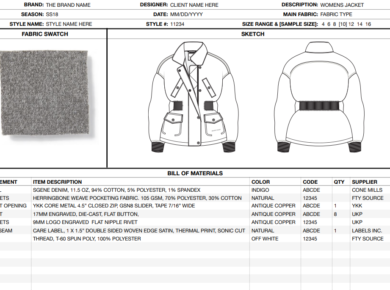About a year ago, I was asked to write an article on manufacturing excellence for a sourcing journal.
I considered manufacturing excellence to have numerous components. One of these was Excellence in Communication. Some were taken slightly aback by this.
What does communication have to do with manufacturing excellence?
Simple! When a buyer places an order with a supplier, the buyer is looking for the total experience, from A-Z, to be smooth and trouble free. The buyer is looking for excellence in all areas, not just the physical manufacturing.
The problem here is that many suppliers (and buyers) do not really spend much time giving communication much thought. This is a critical mistake, which cannot lead to misunderstandings, and ultimately a bad experience all round.
At Sourcing Playground, we want to ensure both our suppliers and buyers have a really positive experience. This is a core value.
To this end, we have decided to offer some tips to improve supplier’s communication with their buyers. The logic is simple. Buyers are more likely to stick with suppliers that communicate well (all other things being equal).
So, let’s begin.
- Get yourself a proper email address. Personally, I get many mails from XYZ@google.com or ABC@yahoo.com. Rightly or wrongly, I do not take these mails seriously. My perception and bias (and this is common with many buyers), is that this is not a serious supplier. They won’t even spend the US $5 monthly to get a personalised email address. If they are not prepared to spend such a small amount, where else are they going to try to save some money? My order?
- Communicate timeously. I have mentioned this in previous blogs. If a buyer sends an email, respond as soon as possible. Even if you cannot give the buyer the information they want, acknowledge their mail, and commit to a timeframe when you will supply the information. No buyer should have to wait more than 24 hours for a reply. If this is a potential new buyer, this is even more important. The longer you wait, the higher the chance of another supplier responding and getting the order.
- Do not miss a communication deadline. If you really are intent on annoying your buyer, miss a communication deadline. This may verge on sarcasm, but it happened to me this week. I requested a pro forma invoice on Wednesday. The supplier responded, undertaking to send it that evening. It was not sent. On Thursday morning I mailed the supplier again. The reply was that it would be sent on Thursday. No apology or reason why it was not sent on Wednesday. You guessed right. I never received it on Thursday. I mailed the supplier again. Eventually I received it on Friday. It was annoying to say the least. What makes this worse is that I needed the pro forma invoice to open a letter of credit, to pay the supplier. Now this can only be done next week.
- Use the buyer’s name in all correspondence. Always use the buyer’s correct name. My name is Michael Eisman. In China, family names come first. So, I often get mails that start “Dear Eisman”. My Indian colleagues often start a mail with “Hi Dear”. I know this is a common form of endearment in India, but not for business.
- Use correct spelling and grammar. I do not think I need to elaborate too much on this. Suppliers need to ensure they have staff that can write and speak English well. Too many suppliers try to save money here, and use a staff member whose English is not good. Fortunately for us native English speakers, English is the international language of business. This is even more critical in face to face meetings. You do not want any details lost due to poor translation.
- Do not use any “local” English or any slang. For example, most foreign buyers do not know what a crore is. This is an Indian word for ten million. I am sure you get the point.
- Ensure your communication is logical and laid out in a sensible manner. Spend a minute checking your emails and ensure they make perfect sense before sending. Use your spellcheck, too.
- Dates. 9/7/2018, 7/9/2018? Depending on where you are in the world, this date format could mean the 9th of July 2018, or the 7th of September 2018. Countries that follow the American system, would say 7th of September 2018. If you follow the British system, the date reads as 9th of July 2018. This has caught many seller and buyer out. Depending on where you are this represents a difference of two months. Rather state the date in the long form in all communication. For example, 10th of January 2018. No confusion. If your buyer/supplier uses the short form, clarify, do not assume.
- “But email is almost extinct. What about Skype, Line, WeChat, WhatsApp, etc?” I am all for technology, but all these apps have major limitations and flaws. In business you want a universal form of communication, with an easily traceable “paper trail”. None of these apps fit these two critical criteria. In China, WeChat is prevalent, in other countries Line is. Not all these apps are available in all countries (except Skype, but this is essentially a telephone). You therefore need multiple apps for different countries, and need to remember which supplier/buyer uses which. They are not universal. Everyone has their email app on their smartphone. Email is universal. These apps are also not easily searchable, therefore there is no easily traceable “paper trail”. Try finding a specific WhatsApp message from two years ago. I used to use WeChat for a few Chinese suppliers. Somehow, I lost the app in a phone change. Now I cannot get it back, as my ID needs to be verified by three of my WeChat contacts. I cannot remember which suppliers I used WeChat with, as I last used it a few years ago.
Put your new found skills to the test with new buyers on Sourcing Playground.





